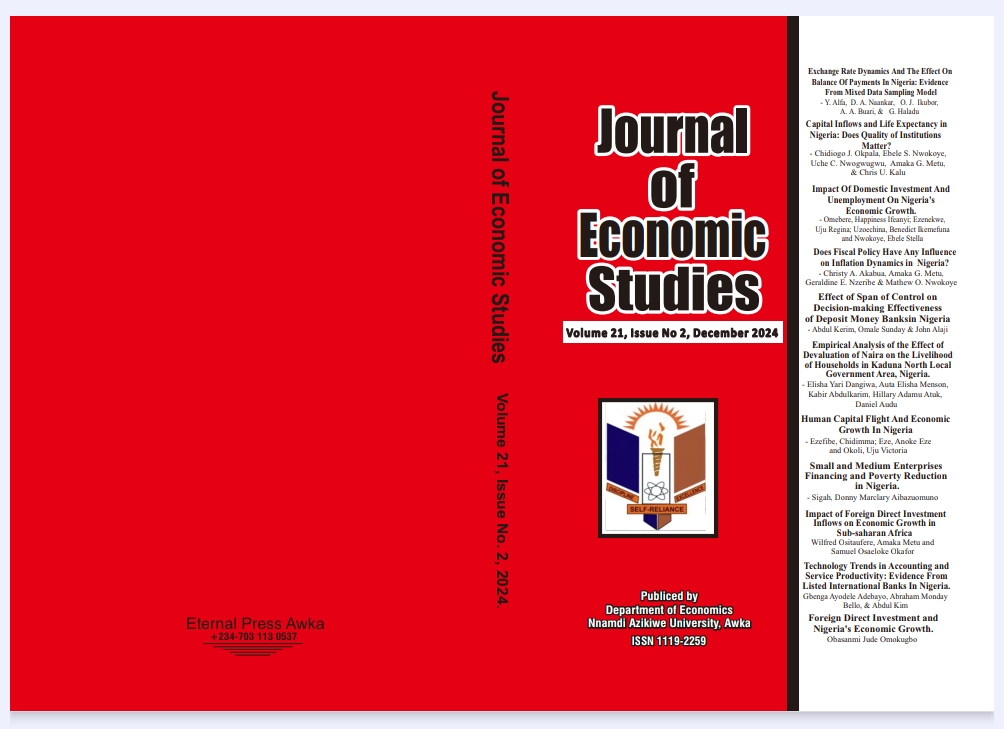EXCHANGE RATE DYNAMICS AND THE EFFECT ON BALANCE OF PAYMENTS IN NIGERIA: EVIDENCE FROM MIXED DATA SAMPLING MODEL
Keywords:
exchange rate, balance of payments, MIDASAbstract
This study used both annual and monthly data to investigate exchange rate dynamics and its pass-through effect on balance of payments (BOP) in Nigeria over a period of 1980-2023. Data on total trade (TTR) and balance of payment (BOP) were annual data while data on exchange rate (EXR) and inflation (INF) were quarterly and monthly data respectively. The data were analysed using the mixed data sampling (MIDAS) model. Findings show that appreciation of exchange rate could, at different times, have both positive and negative impacts on BOP. That is, the impact of EXR on BOP is positive in the first and third quarters but negative in the
second and the fourth quarters. Hence, the study establishes that exchange rate across the quarters has expected signs and are statistically significant except for the second quarter. The result further shows that inflation has a negative impact on BOP for a period of twelve months of every year investigated. The result shows that inflation is a drag on the Nigerian balance of
payments. TTR has a positive and significant impact on BOP both in the short run and in the long-run. However, in terms of the sizes of the estimated coefficients, the impact of total trade on BOP is higher in the short run than in the long run. Based on the finding, the study recommends that the CBN exchange rate regime should pursue a stable and sustained exchange rate because internal and external performance of the nation hovers around exchange rate stability.


